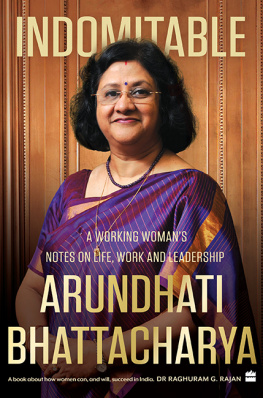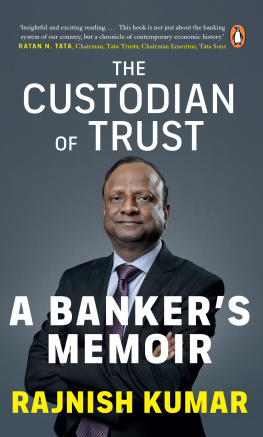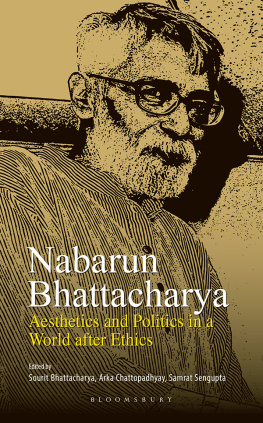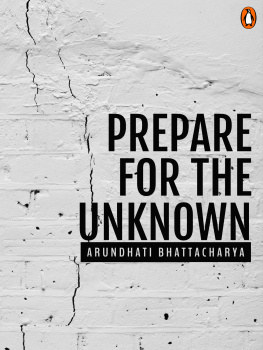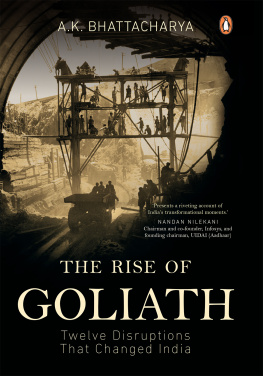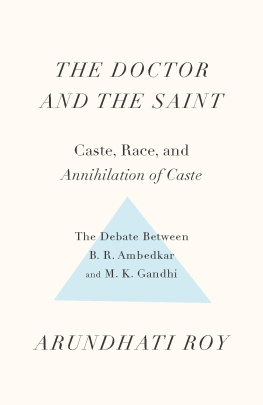Table of Contents


To my husband Pritimoy and daughter Sukrita, for their constant encouragement and support; my parents Prodyut and Kalyani, for allowing me to bloom; and to all the millions of young Indians who hail from the small towns and villages of India, with stars in their eyes, hope in their hearts and the grit, determination and belief that they can excel and contribute to building this nation.
Contents

S eptember 2021: It was a rainy, three-day weekend. I got a call from the usual effervescent Arundhati, requesting me if I would be inclined to read her book and write the foreword. Before I had even made up my mind, her unedited manuscript was in my inbox. As I began to scroll my iPad, I soon realized I just wanted to keep reading more.
I cannot claim to have known Arundhati for years. I first met her in 2013 when she was heading SBI Capital Markets, a subsidiary of the State Bank of India (SBI). I had been asked to chair a committee set up by the Central Electricity Regulatory Commission, and Arundhati was the lone member. Over the many years of my working life, I have met several people from the banking and financial cadre. I instinctively knew Arundhati was a cut above the rest.
As a public person, Arundhati made her mark in history as the first woman to lead SBI. Yet, those who followed her story more closely will always remember her for graciously embracing her title as chairman, as the SBI Act could not legally permit the change to chairperson. Admirably, the title never frazzled her. She knew she had to get on with the task, tackling challenge after challenge that confronted her as she helmed the countrys largest bank.
As an SBI lifer, she remained driven by a simple mantra which was to leave the bank better and stronger than when she joined it. And clearly, she did. Much credit goes to her for the banks changes in human resource management, effecting the mega-merger of six banks into SBI in record time, driving the financial inclusion agenda and spearheading the banks digital transformation amongst several other milestones.
This book is an endearing read with a narrative of her personal life interspersed with her work life. She is brutally honest with worklife struggles, but it never weighs her down. She steers away from aspiring to be a superwoman, nor does she wallow in guilt for being away from home when work demands it. To her credit, she seized every opportunity to help other colleagues facing similar issues.
Few know that she was instrumental in getting the Indian banking system to shift to having two Saturdays off in a month rather than a six-day working week. Drawing from her own experience, she knew how exhausted she used to be each Monday morning at work, especially in her early days of motherhood. I am sure generations in the Indian banking sector will remain grateful to Arundhati, perhaps silently chanting, Thank God its Saturday! Thanks to Arundhatis efforts, SBI now allows a two-year sabbatical, initially intended only for women but later extended to all single male employees. Her people-first leadership trait has always held her in good stead.
For career women, Arundhati is iconic. She reasons that the advantage of female leaders is their ability to be less territorial and far more collaborative. The only instance where Arundhati humourously admitted to asserting herself on gender issues was on behalf of women in the boardroom. She believed, for far too long, women in saris froze in the boardrooms as the air-conditioning temperature was always suited for men wearing coats and ties. So off went the coats of her male board members, allowing the chairman to carry on with business without freezing in the boardroom!
Besides being revered for her competence, she attributes her success to a simple plan get the right people, in the right place, obtain their buy-in, empower them and back them up to take courageous calls with the right intent. She demonstrates that the qualifications for the top job do not come from the degree one holds but from dogged determination, keeping the learning curve steep, carrying people along with ones successes and reaching out for help when needed.
Few can imagine this powerful lady struggled initially to balance ledgers or count cash correctly. She acknowledges the opportunity of standing on the shoulders of giants from her mentors and supportive colleagues to her family and friends who always rallied around her whenever she needed it (which was more often than not). In equal measure, she shares multiple instances of tackling roadblocks and naysayers at work.
While frequent transfers are par for the course for SBI officials, she amusingly reveals the unwritten law of SBI, which is that one always gets transferred the moment one discovers a good tailor for sari blouses and a good hairdresser! Yet, with each transfer that strengthened her career path, she remained sensitive to the disruptions it caused the family and the strains of recreating support systems in new locations.
Staying grounded whilst in a position of power is always a tricky test of character. That is why family and friends are so important. Her anchor remains her spouse. One does recall her self-deprecating comment of excitedly telling her husband that she and the Queen of England were on the list of the most powerful women in the world, only to have her husband text back saying the Queen would be on that list for life, while she would be off it as soon as she retired! Ultimately, no accolade or award matches up to her true joy of milestones achieved by her daughter, who has learning disabilities. For the ever-humble Arundhati, she knows lifes true triumphs.
She leaves the reader with a thought-provoking conclusion. Work is transitory, family and friends are not, and the balance must be found. As for Arundhati, she continues to live up to the meaning of her name one who is unstoppable.
Indomitable is one of the best memoirs I have ever read, though Arundhati is already trailblazing in a new avatar as chairperson and CEO of Salesforce, India.
Deepak Parekh
Chairman Housing Development
Finance Corporation

Y oure always reading! Isnt it time you started writing? My mothers remonstration still rings in my ears as though I heard it just yesterday. Well, Ma, the time seems to have finally arrived, and I hope you enjoy this book (wherever you are) as much as I have enjoyed writing it.
However, it almost felt as though the book wrote itself.
I belong to that generation that went from the single Doordarshan channel to the hundreds we now get on television not to mention YouTube and streaming platforms like Netflix. We went from walking to school, our bags loaded with books, to learning from home on iPads; from train rides that left us exhilarated if grimy from the coal dust streaming behind the engine to pest-infected, air-conditioned coaches to state-of-the-art bullet trains.
In this book, by tracing my journey, I attempt to record the growth of India as seen through my eyes from an innocent child to a callow teenager to being a woman in the countrys banking sector.
When I started my career forty-five years ago, opportunities were limited more so for women. One needed connections, as well as sheer grit and determination to land a job. There were barriers erected within and outside the home. Society was far less forgiving back then. The choice of careers for women too was very limited.

